
My Way: Violin Construction From Start to Finish
PART II: OUT OF THE WOODS AND INTO THE SHOP
The questions all of us face who are struggling to create something that will last beyond ourselves giving real pleasure and adding to the collective treasure chest of future generations rather than swelling the communal dump are those questions involving aesthetics: questions concerning beauty and why one thing of a class is beautiful and another is not, why certain sounds are pleasing and others offensive.Violinmaking is a special art - one that is visual as well as aural, tactile and even sniffable thus appealing to almost all our senses.
The inherent visual beauty of the violin design with its combination of the practical and the graceful has intrigued for hundreds of years. And of course the sound, the illusive sound. What is it? Described and danced around but never defined. The feel? Violinists love the feel of their instruments, and they can tell one from another in total darkness without ever producing a single note. The wonderful smells of a violin begin with the varnish and wood until the built up odors of the centuries collect inside and emmanate from the ff holes along with the sound.
What concoctions of tangible stimulants to our senses really make a beautiful violin? These are the questions I have been asking myself since I was in the seventh grade and in the process of revarnishing my school cello with Sherwin-Williams orange fence stain, convinced that I was playing god.
Follow me into my shop; glimpse my approach from the bits and pieces I have collected below.
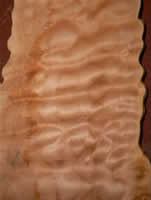
Slab cut maple
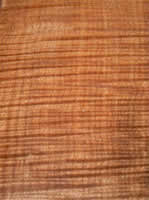
Quarter cut maple


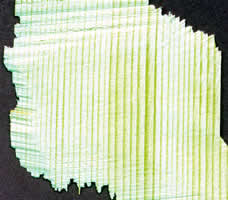
Wood from the coniferous forest used for the top is always quarter cut. This is a piece of Englemann spruce cut in 1982. Note the dark growth lines of winter compared to the light wood in between which is summer wood.
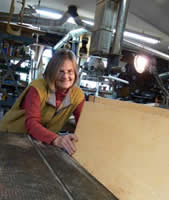
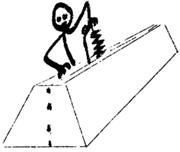
The quarter cut piece is sawn lengthwise.
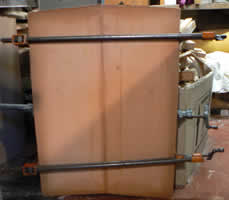
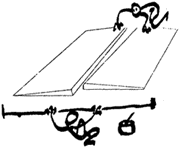
And the two haves are glued together.
.jpg)
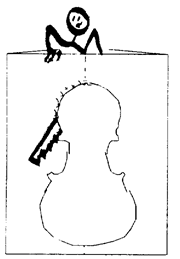
The outline of the violin is sawn out of the wood for both top and back plates. In the days before machinery, the outline was sawn out by hand. Now makers use a bandsaw.
.jpg)
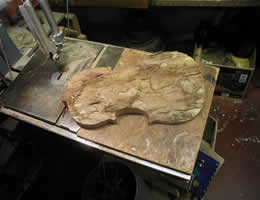
The band saw can make the task of sawing out the back or top of an instrument complete in minutes instead of hours.
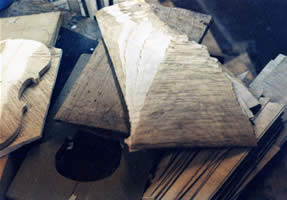
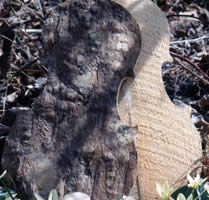
Notice the bubbly look of maple. This wood is from the leaning hollow tree that Victor Gardener, Karla Shapreau and I cut in 1982. A top and back are cut out. Ribs are also sliced. Now all the preliminary stages needed just to obtain "parts" to begin the manufacture of the body of an instrument are complete.
